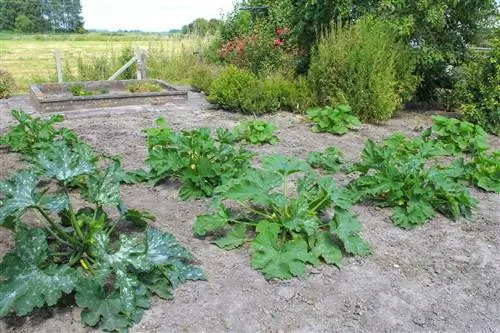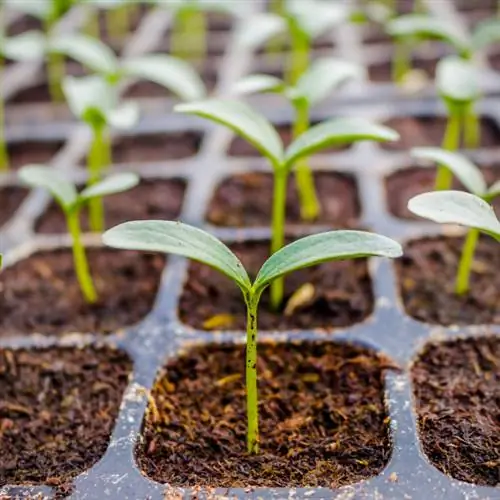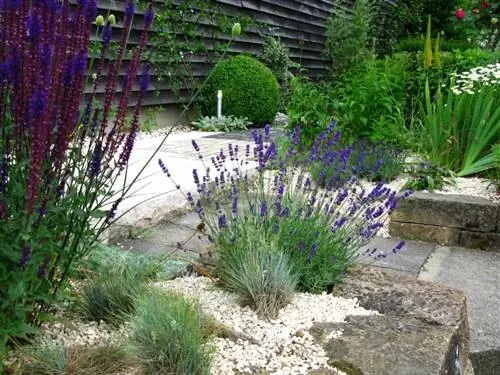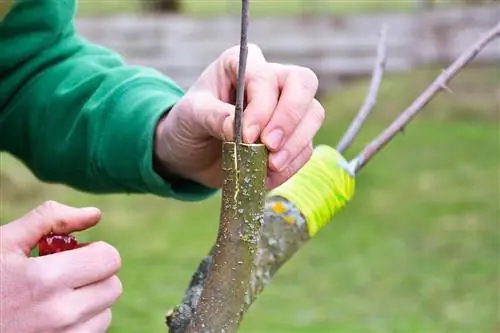- Author admin [email protected].
- Public 2024-01-10 23:11.
- Last modified 2025-01-23 11:19.
Aubergines originally come from subtropical regions in India and are difficult to cultivate in Germany because it is usually too cold for them. In addition, eggplants do not get along with all vegetable plants. For example, pumpkins should not be planted directly next to eggplants.
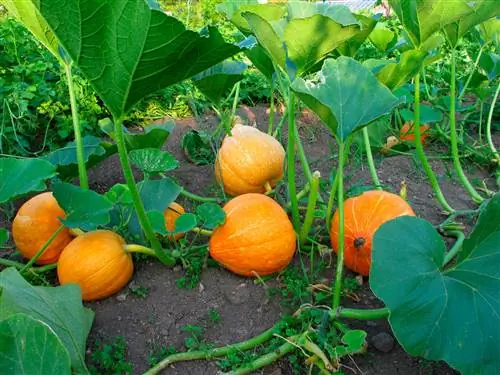
Why shouldn't you plant pumpkins and eggplants together?
Aubergines and pumpkins should not be planted next to each other in the bed, asboth are heavy feedersand require a lot of nutrients. If you stand too close together, they will compete andGrowth restrictions will occur In addition, overgrown pumpkins will take up space for eggplants.
How can you grow eggplants and pumpkins next to each other?
If you want to put both plants together in the bed, you should maintain aminimum distance of 60 centimeters,, or preferably more, from plant to plant so that each has enough space. Both also need a lot of additional nutrients that are essential for a productive harvest. When planting the young plants, add compost to the soil to improve it. You should fertilize weekly. During the entire growth phase, make sure that the pumpkin does not overgrow the eggplant with its fast-growing runners.
Which other plants go better with eggplant than pumpkins?
Optimal partner plants for eggplants areWeak feederssuch as radishes, lamb's lettuce, spinach or beans. They do not compete with the eggplants and do not rob them of essential nutrients or space. The correct mixed culture is particularly important in small beds outdoors, in raised beds or in the greenhouse. Other heavy feeders that grow just as quickly as pumpkins also do poorly next to eggplants (e.g. zucchini, cucumbers and melons). Aubergines are nightshade plants and should also be kept far away from other nightshade plants such as tomatoes, peppers and potatoes.
Which plants get along better with pumpkin than eggplant?
A very popular mixed culture with pumpkin isPumpkin, corn and runner beans The plants complement each other perfectly. The corn provides a natural climbing aid for the beans. The pumpkin leaves provide good shade for the soil so that it is better protected from drying out. The beans in turn supply the corn and pumpkin with nitrogen so that they can grow particularly well. Although corn is just as heavy a feeder as pumpkin, its taproots extend deeper so that the two do not compete for nutrients.
Tip
Also pay attention to the crop rotation next season
Heavy feeders leach the soil a lot. Therefore, medium-nutritional crops (e.g. carrots, kohlrabi) should first be grown in the same place in the following years. In the third year, weak feeders (e.g. radishes, beans) should be planted there. In the fourth year, the bed is left fallow to recover. If you stick to the crop rotation, you ensure a balanced nutrient balance and prevent diseases or pest infestation.


